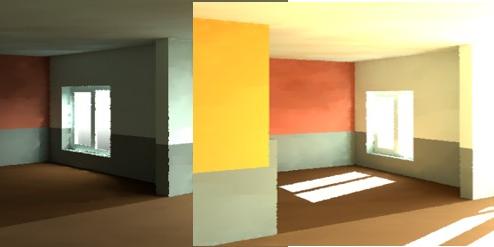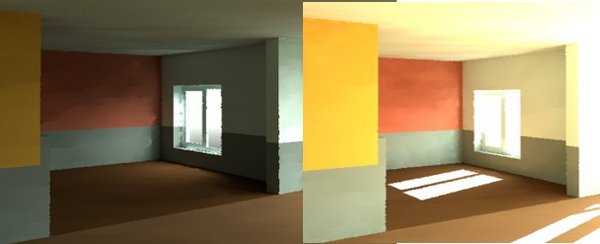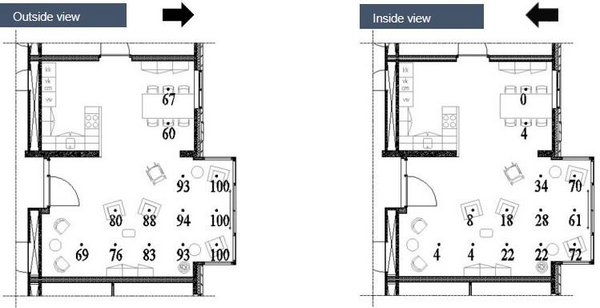
Name of student: Ir. I.M. (Ilse) Nugteren
Supervisors: Ir. M.P.J. (Mariëlle) Aarts, A.M.C.(Toine) Schoutens (Davita)
Chair research belongs to: Building Lighting
Strategic area: Health and Environment
Project year: 2012
A lighting design, attuned to visual and non-image forming (NIF) effects, contributes to the well-being of elderly people with dementia. Based on literature, in table 1, recommendations were found for illuminance levels (E) and correlated color temperature (CCT). Visual and NIF effects can be achieved by electric lighting as well as by daylight. The aim of this study was to locate the position in the communal living room of a newly built nursing home (WoonZorgcentrum Haaglanden, The Hague), which fulfil both needs most of the time, using only daylight. The time slots for the NIF effects were taken from 10-11 am and 3- 4 pm and for visual needs between 9 am and 5pm.
| Visual effects | NIF effects | |
|---|---|---|
| Illuminance (lx) | > 1000 lx horizontally (h=0.75m) | > 1000 lx vertically at eye level (h=1.2m) |
| Correlated Colour Temperature (K) | No specific requirements | > 6500 K vertically at eye level (h=1.2m) |
| Exposure time | between 9 am and 5 pm | As reference from 10-11 pm and from 3-4 pm |

To predict the illuminance levels for a complete year, a model of the future situation was made, using the software program Radiance. Radiance models were made of the living rooms in their final state (figure 1). Based on the simulation of the daylight illuminance levels, the extent to which the NIF needs (> 1000lx, vertical at eye) can be fulfilled strongly dependent on the position in the room, viewing angle, time of the day, and moment of the year.

The illuminance levels near the window satisfy those needs most of the time when looking at the window direction (70 -100 % of the year between 10-11 am (figure 2) and 60-90 % between 3-4 pm). When looking away from the window, 4-70% of the year values over 1000 lx can be reached.
The visual needs can be fulfilled with daylight only, between 30 and 95% of the year.
The kitchen and the back of the living rooms need additional lighting more than 40% of the time for both lighting requirements. Based on the CCT- measurements, daylight can be used to fulfil the NIF needs for all measurement positions (measured values between 4700K – 6200K). Note that since the finishing of the room influences the CCT, the outcome might be different reality.
Concluding: Depending on the layout and finishing of the room, daylight can very well be used to fulfil both visual and NIF effects in communal living rooms for the largest part of the year. Additional lighting is still needed to ensure the recommended lighting condition for 100% of the time.